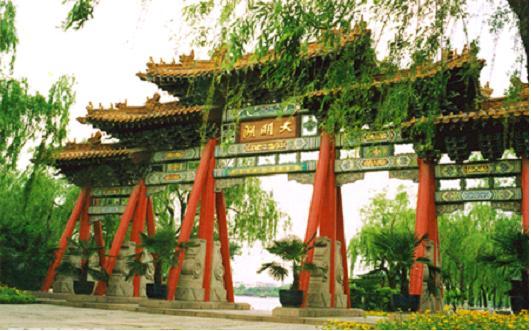City University of Hong Kong Dep

Department of Chinese, Translation and Linguistics
Research Seminar

The Omnipresent Writing Brush:
Inscriptions in a Traditional Chinese Garden
Presented by
Dr. Yang Ye
University of California, Riverside
Date: 17 July 2008, Thursday
Time: 4:30pm - 6:00pm
Venue: B7516 (Lift 3, 7/F, Blue Zone),Academic Building,CityU
Abstract
Poetry, calligraphy and painting, which share the use of the writing brush, have long been recognized as interrelated art forms in the Chinese tradition; and since the Tang dynasty they have been established as the sanjue or Three Perfections, which constitute a scholar’s fundamental and ultimate cultural achievements. In a traditional Chinese garden, where the numerous scenes are designed to look like paintings, poetry and calligraphy are far more significantly incorporated into the unity of the garden than in its Western counterpart. The incorporation is reflected in the numerous inscriptions in the garden, which take many different forms, including names of buildings or aphoristic lines on horizontal boards, poetic couplets on paired vertical plaques, poems or prose pieces on walls, and those carved on cliffsides, rocks, steles, etc. In content such inscriptions consist of both original compositions and citations from famous literary texts, serving mostly to “set the scene”, i.e., to highlight the significance of any specific view or structure, or sometimes to find an outlet for the pent-up emotions of the owner of the garden, who often finds a refuge therein from the political turmoil of the age. In short, the inscriptions help to evoke a world of allusion and association, and to enhance the aesthetic dimensions of a garden. One may say that the writing brush, visible in the inscriptions and invisible in the changing scenes all around, is omnipresent in a traditional Chinese garden. This presentation starts with a brief introduction of the establishment of the sanjue as a cultural convention and a survey of the major scripts of Chinese calligraphy; then, using samples of inscriptions from representative Chinese gardens, it focuses on an illustration of their various forms and aesthetic functions.
Speaker
Yang Ye 葉 揚 is Director of Comparative Literature Program and Associate Professor of Chinese and Comparative Literature at the University of California, Riverside. He has already been appointed as an Advisory Professor at Fudan University in China. He received his B.A. in English and American Language Literature from Fudan University (1982) in China, and his A.M. (1985) and Ph.D. (1989) degrees in Comparative Literature from Harvard University. The author of two books, Chinese Poetic Closure (1996) and Vignettes from the Late Ming (1999), he has also published a number of articles, book reviews and literary translations, and contributed essays on the translation of Chinese classics to the Encyclopedia of Literary Translation into English (2000). While his scholarly interests spread across a wide spectrum of Chinese and Western literature and culture, they focus primarily on pre-modern Chinese and Western poetry and belles-lettres prose.